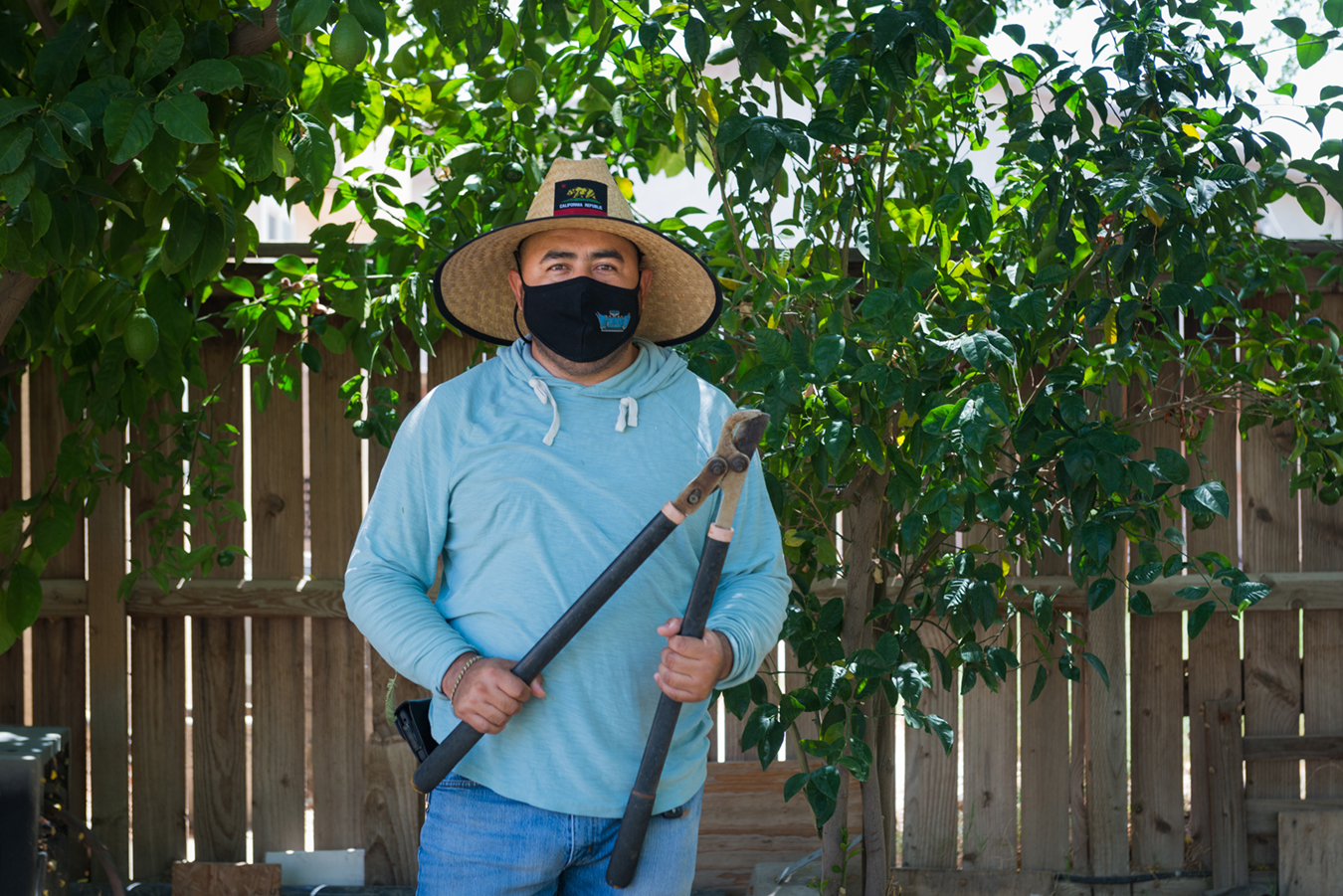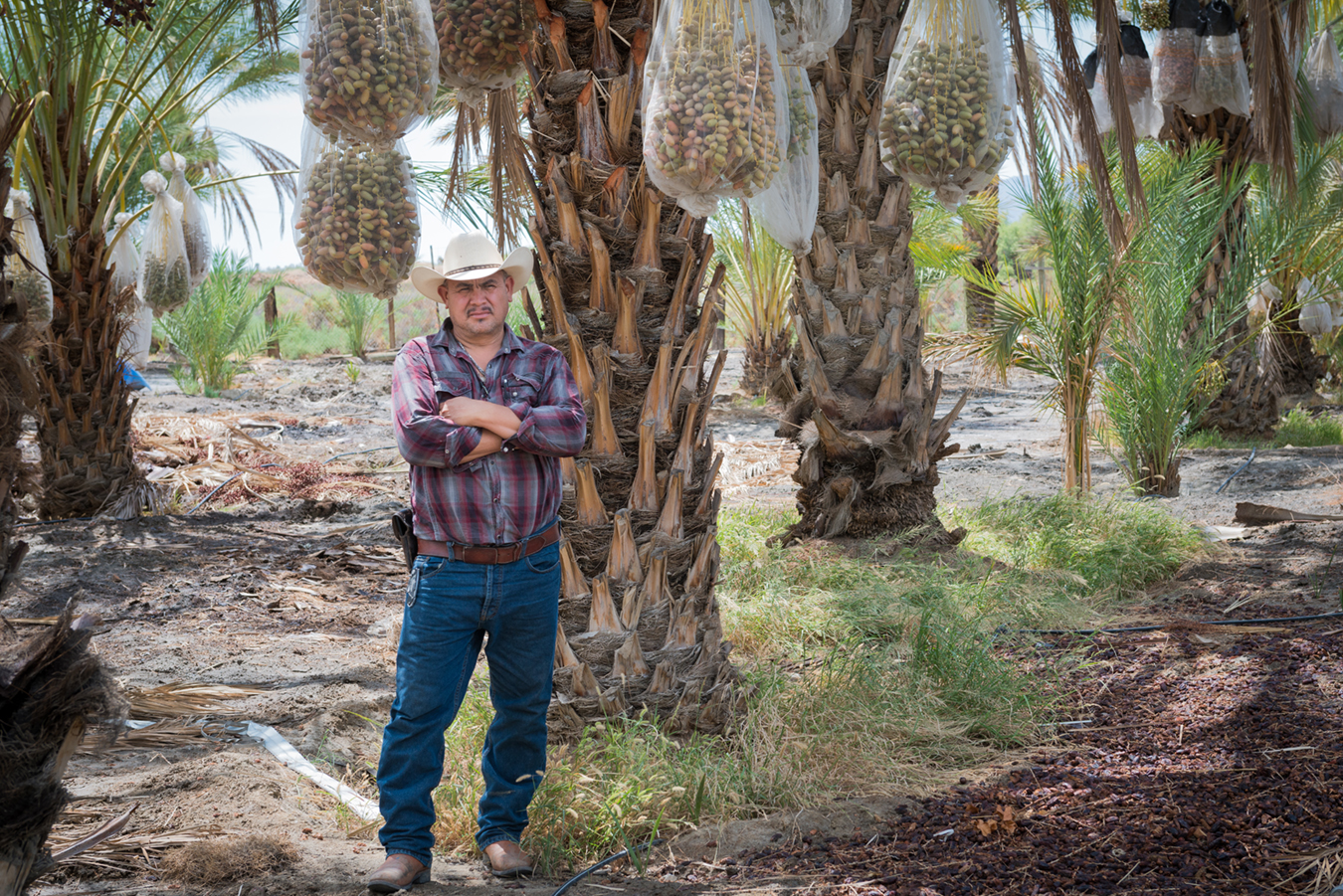COACHELLA, Calif. — Leoncio Antonio Trejo Galdamez, 58, died in his son’s arms on June 29 after spending the day laying irrigation pipes in California’s Coachella Valley. News of his death reverberated through the largely Latino community near the Mexican and Arizona borders — another casualty in a dangerous business.
“Farmworkers are at the front lines of climate change. And, in some instances, we’re seeing a perfect storm battering our workers: covid-19, wildfire smoke and heat,” said Leydy Rangel, a spokesperson for the United Farm Workers Foundation.
For workers like Trejo Galdamez, whose jobs depend on outdoor work, a few degrees can mean the difference between life and death. Farmworkers here wear long shirts, thick jeans, heavy boots and wide-brimmed hats to guard against the heat. Even so, ambulances are frequently called to the fields, and heat-related illness appears to be increasing in the area.
“The heat feels awful,” said Jaime Isidoro, 36. “You start to work, you start to sweat, and the shirt underneath gets drenched.”

Born in Puebla, Mexico, Isidoro has been picking crops for two decades in the Coachella Valley. The region has one of the country’s longest growing seasons, providing most of America’s winter vegetables. It’s also home to hundreds of date farms, which thrive in the hot, dry climate.
Heat is a given here.
“A few years ago, my head started hurting. I started to get chills. I went to the clinic and they gave me a couple of shots,” said Isidoro. “They told me it was a heatstroke. You don’t know the symptoms. I didn’t know it was that until I had it.”


And the temperatures are getting more extreme.
On Aug. 4, three of the desert communities in the region surpassed their daily recorded highs, hitting 122 degrees Fahrenheit in Palm Springs and Thermal, and 120 in Indio. Thermal set a record for its hottest temperature ever for August at 121 degrees. California registered its hottest June and July.
Heat is the leading weather-related cause of death in the United States. Heat stress killed 815 U.S. workers and seriously injured more than 70,000 workers from 1992 through 2017, according to the Bureau of Labor Statistics. In California, heat-related emergency room visits increased by 35% from 2005 to 2015, the latest year for which data was readily available, with disproportionate increases among Black, Latino and Asian American communities.
Medical staffers in the Coachella Valley say they’ve treated a rising number of patients suffering from heat exhaustion or heatstroke in recent years. California in 2018 saw 6,152 emergency room visits due to heat-related illness. Riverside County, which includes Coachella, Indio and Palm Springs, has among the highest rates of heat-related ER visits in the state.
“If we start seeing above 120 degrees in any regular capacity, we’re really in uncharted territory. The human body is not designed to exist in that kind of heat,” said Dr. Andrew Kassinove, emergency department physician and chief of staff at JFK Memorial Hospital in Indio.
The hospital regularly treats people who work outside for heat exhaustion, characterized by nausea, lightheadedness, fatigue, muscle cramping and dizziness. Less frequently they see heatstroke, a more dangerous condition whose symptoms include headache, confusion, vomiting, rapid heart rate, fainting and a failure to sweat.
JFK Memorial has treated 129 heat-related cases already this year, compared with 85 in all of 2020 and 75 in 2019, said hospital spokesperson Todd Burke.
“Core body temperatures that are really elevated require lifesaving measures to treat them,” Kassinove said. As temperatures rise above the typical human temperature of 98.6 degrees Fahrenheit, the body struggles to dissipate the heat.
California has some of the strictest worker protections for heat exhaustion. A standard adopted by occupational safety officials in 2006 was the first in the country to apply to all outdoor jobs, mandating companies to provide workers with adequate shade, downtime and water. After a historic heat wave hit the Pacific Northwest this June, Oregon and Washington adopted similar protections. Some members of Congress have introduced a similar bill and want the Labor Department to establish federal standards.
But workers’ rights groups say the rules are not always enforced. And farmworkers, who are desperate for the money and often get paid per piece during harvests, often overlook their own safety, they say.
“Farmworkers are less likely to file complaints,” said the UFW’s Rangel. With no federal assistance during the pandemic, “they had no option; they had to keep showing up to work if they wanted to feed their family.”
Latinos, who represent the majority of California farmworkers, are as a group more likely to have conditions that can be exacerbated by the heat, like high blood pressure and kidney disease.
Health workers stress the importance of hydration and urge the workers to consume less dehydrating soda, coffee and alcohol, said nurse practitioner Jose Banuelos at Coachella’s Central Neighborhood Health Foundation. “You can’t change your job if your job is outside. But I tell people to wear sunscreen and a protective coating.”
The heat may also affect a patient’s use of medicines. Antipsychotics and antidepressants, for example, can reduce thirst and thus cause dehydration, as do diuretics, sometimes taken for swelling.
Isidoro, who said he’s looking for other jobs, often sees fellow workers struggling in the fields. If they feel faint, they can sit in the shade, or jump in a nearby truck for air conditioning — or call 911 if symptoms persist. But it’s a point of pride not to show the heat is getting to you, he said — and calls to slow down are often met with snickers.
Around Bakersfield, while picking table grapes during the summer and fall harvest, ambulances are a regular sight, Isidoro said. “Daily you would hear: ‘Here comes the ambulance’ or ‘So-and-so left early because he felt ill.’”

But many workers ignore the warning signs, said Aguileo Rangel Rojas, another farmworker. “They are OK risking their health, not thinking about it, to make sure they can make a wage.”
Rangel Rojas knows the risks all too well. In 2005, his 15-year-old son, Cruz, suffered heatstroke while picking grapes. He spent 15 days in the hospital and the family wasn’t sure he would survive. His father teared up at the memory.
“We didn’t have money. We didn’t speak English. Without cars. Without anything,” he said. “We didn’t know our rights. It can rip your heart out.”


Cruz stopped picking after that and went back to high school; he’s now a UFW employee. His father, now 53, still works in the fields with his wife.
In August, Rangel Rojas began working nights, when temperatures go down to the low 80s. But even without extreme heat, there are risks. Evaporation from the crops hangs thick in the air, creating humidity that can bring on thunderstorms and flash floods. Lightning flashed around him while he was out cutting celery on a tractor on a recent predawn morning.
“We can get hit by lightning at any moment and we could all die,” he said. “There should be an instance when it’s raining and the bosses have us stop working, but they don’t. We don’t have the luxury of sitting behind a desk.”
